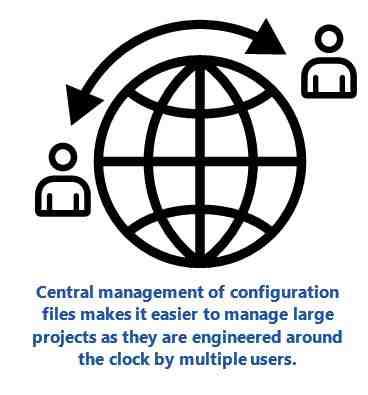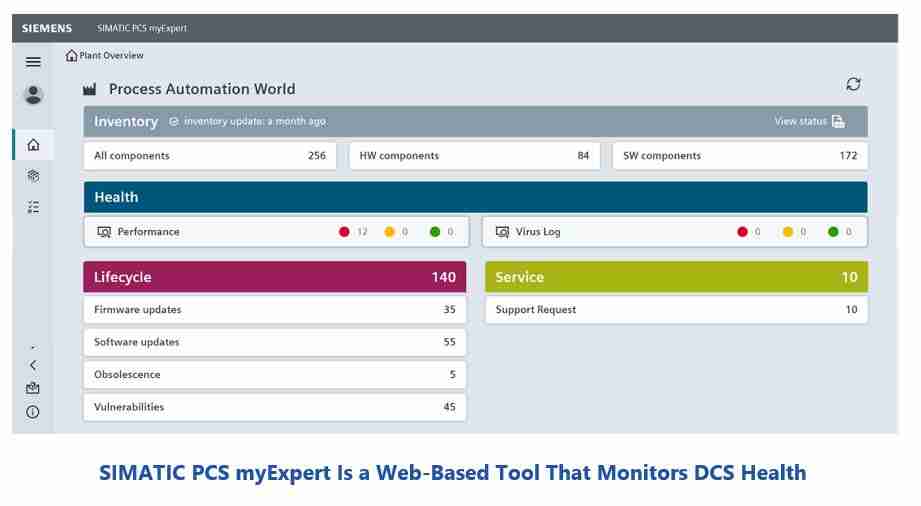

The growing influence of information technology (IT) on operations technology (OT) promises to bring enormous benefits to industrial automation systems. To achieve lofty goals. such as Industry 4.0 and digital transformation, distributed control systems (DCS) need to provide better access to raw process  data, and tools to turn data into meaningful information. To achieve this, modern tools are added to existing legacy DCS systems to upgrade them to today’s requirements. But Siemens has taken a different approach. With its web-based engineering, SIMATIC PCS neo focuses on the interface between operators and DCS while relying on robust automation hardware. Configuring a DCS in a browser would have been unthinkable just a few years ago, but today it is an integral part of Siemens’ SIMATIC PCS neo.
data, and tools to turn data into meaningful information. To achieve this, modern tools are added to existing legacy DCS systems to upgrade them to today’s requirements. But Siemens has taken a different approach. With its web-based engineering, SIMATIC PCS neo focuses on the interface between operators and DCS while relying on robust automation hardware. Configuring a DCS in a browser would have been unthinkable just a few years ago, but today it is an integral part of Siemens’ SIMATIC PCS neo.
This ARC View is part of a series of reports that look at various innovative aspects of Siemens’ new concept for process automation in the areas of operator empowerment, collaborative engineering, and system robustness.
For decades, process automation systems have adhered to a traditional architecture that distributes control around the plant in groups of semiautonomous subsystems. Each subsystem is configured from an engineering station (ES) while each process is monitored from an operator station (OS), rich with faceplates for process monitoring, loop control, and alarm management. The software is proprietary and tightly linked to the DCS, which itself runs on proprietary hardware.
Several years ago, Siemens launched SIMATIC PCS neo, a next-generation concept for process control that is more of a “rethinking” than a “reinvention” of how a DCS should work. The development of SIMATIC PCS neo focused strongly on the user interface (UI), which is entirely web-based – a novum in the world of process automation. The decision to make the UI web-based was significant because it appeals to the incoming generation of young process engineers that expect to use modern, “IT-like” tools rather than the proprietary, monolithic software of the past. Because the UI is HTML5-based, it can use the same displays across a wide variety of devices that go far beyond the traditional ES and OS.

While some manufacturing processes are fully automated from start to finish, many processes rely on guidance from operators to steer them in a certain direction to achieve a desired outcome, such as a certain quality level or maximum yield. While the underlying DCS configuration stays the same, the operator interacts continuously with the OS to monitor the ongoing process and adjust parameters as needed, with the UI playing a critical role. In fact, one way to judge the value of a process automation  system is to measure the productivity achieved through its UI. Plant lifecycles are measured in decades and several generations of engineers and operators will interact with it, so its UI must be intuitive and easy to navigate.
system is to measure the productivity achieved through its UI. Plant lifecycles are measured in decades and several generations of engineers and operators will interact with it, so its UI must be intuitive and easy to navigate.
A web-based UI means that users interact with the DCS via a browser. Instead of proprietary software, a commercially available browser is used as a window into all aspects of the DCS. This has many implications. Most importantly, users have less software to install and maintain on programming and configuration devices. A single interface is used by all devices and because no additional plugins are needed, users can choose any browser that supports HTML5 (Siemens recommends Chrome or Edge). We think of a browser as just one app among many that run simultaneously on our PCs, but HTML5 can be configured to keep the operator’s focus trained solely on critical process screens without distractions.
A clever function available in the SIMATIC PCS neo Advanced Process Library is “Interlock,” which is useful for simple operator troubleshooting. For example, if an operator can’t start a pump, clicking on the Interlock button on the pump’s faceplate displays the logic sequence that enables the starting of the pump’s motor. Rather than calling a maintenance person to troubleshoot the missing signals, the operator can quickly pinpoint the problem. The logic tracing is generated automatically and requires no additional engineering.
While browser-based DCS configuration and monitoring make it easier for engineers to work from remote locations (such as the home office), the real value is in remote maintenance. When a problem occurs, having remote access to a DCS can cut downtime by hours or even days by eliminating the need for maintenance personnel to travel to the site. The mobile worker is thus truly empowered, from maintenance to plant management.
While remote access is possible with proprietary software, the browser-based approach greatly simplifies the process by ensuring cybersecurity with well-known IT technologies and practices that undergo continuous improvement. Security is part of the solution from the start, and not added later as is often the case with legacy systems. Even in plants that aren’t connected to the internet, the browser-based solution still works because the browser only establishes the connection between client and server.
An interesting tool available for SIMATIC PCS neo is SIMATIC PCS myExpert, a web-based application that monitors DCS health. A key feature is asset management for software and hardware assets. In a complex system like a DCS, it is crucial to keep track of software and firmware versions as well as to ensure that updates, patches, and upgrades are performed properly and are well documented. To protect the system from cyberthreats, SIMATIC PCS myExpert provides vulnerability notifications about potential threats and suitable countermeasures for system components.

SIMATIC PCS myExpert taps into the Siemens support portal to provide product and health metric information, in addition to security alerts. According to Siemens, regular monitoring of system health can increase plant availability over its lifecycle by performing obsolescence management, optimizing spare parts, and improving system performance.
Process automation systems haven’t changed much in decades for good reason. The robust, reliable operation of a control system is more important than adding new features. When Siemens introduced SIMATIC PCS neo, the company focused on the user interface by leveraging technologies uncommon in process automation. Web-based configuration and monitoring opens up a world of new possibilities for improved operator interaction with a running system and how process information is accessed, displayed, and acted on.
ARC Advisory Group clients can view the complete report at ARC Client Portal
If you would like to buy this report or obtain information about how to become a client, please Contact Us
Keywords: Siemens, SIMATIC PCS neo, Distributed Control System, Process Automation, Operator Empowerment, Collaborative Engineering, System Robustness, Web-based UI< ARC Advisory Group.

